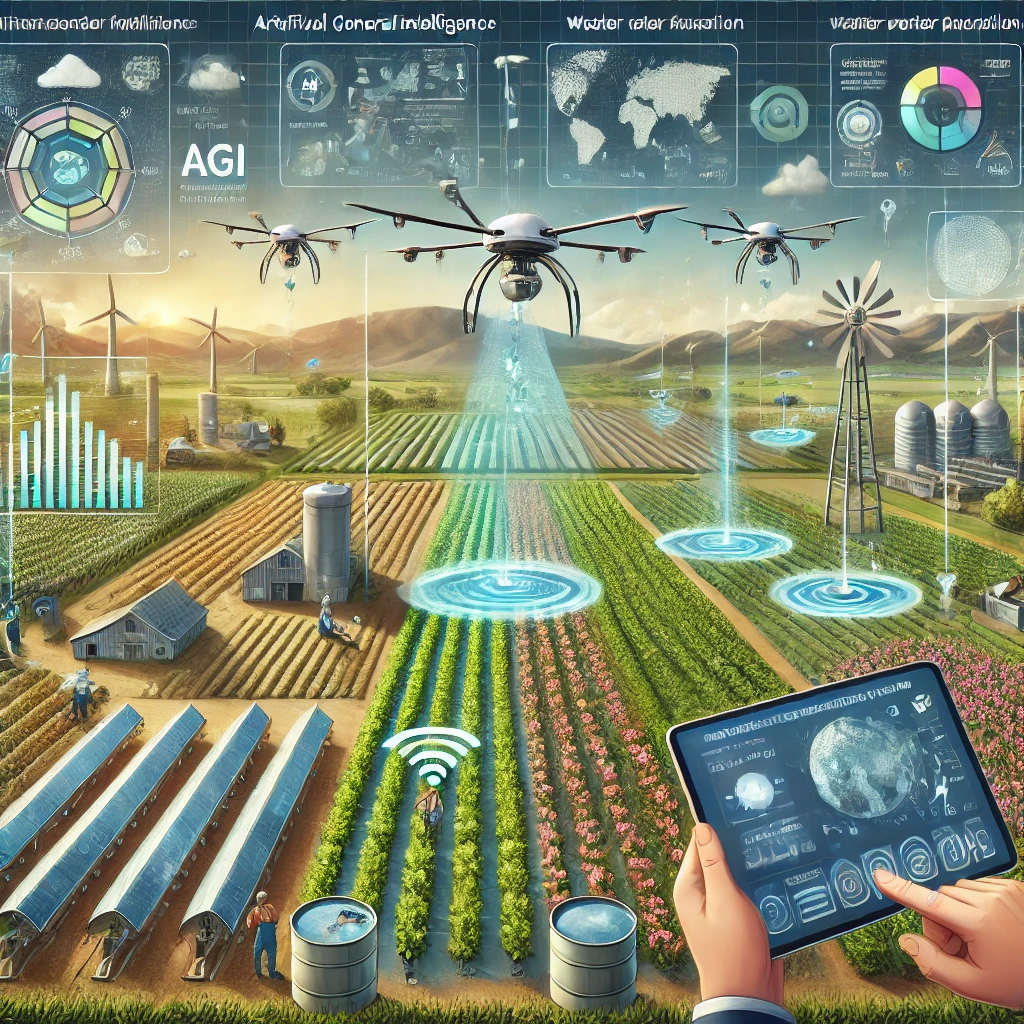In the era of technological innovation, agriculture is rapidly transforming, and Artificial General Intelligence (AGI) stands as a potential game-changer for farmers worldwide. By leveraging AGI, farmers can make informed decisions about crop planning, minimize risks, and maximize yields, particularly when dealing with weather-driven challenges. Here’s how AGI can revolutionize weather-driven crop planning:
1. Enhanced Weather Forecasting
AGI can process vast amounts of meteorological data in real time, delivering hyper-accurate, location-specific weather predictions. These forecasts go beyond conventional methods by analyzing complex climate patterns, enabling farmers to anticipate and prepare for extreme weather events like droughts, floods, or frost.
2. Dynamic Crop Recommendations
By integrating soil quality, historical yield data, and localized weather predictions, AGI can recommend optimal crop types for specific seasons and regions. For instance, if an area is predicted to have irregular rainfall, AGI might suggest drought-resistant crops or alternative planting schedules.
3. Irrigation and Resource Management
AGI can optimize water usage by predicting rainfall and advising on irrigation schedules. It can also recommend resource allocation, such as fertilizers and pesticides, based on weather conditions, reducing waste and environmental impact.
4. Pest and Disease Control
Weather conditions often influence pest outbreaks and plant diseases. AGI can predict the likelihood of such occurrences and guide farmers on proactive measures, including timing and type of pest control, thereby safeguarding crops.
5. Risk Mitigation
Farmers face significant financial risks due to unpredictable weather. AGI can help mitigate these risks by providing scenario analyses and contingency plans. For example, it can suggest diversifying crops or delaying planting based on anticipated weather trends.
6. Data-Driven Collaboration
AGI platforms can connect farmers, researchers, and agronomists, creating a collaborative ecosystem. By sharing weather-driven insights, farmers can collectively adapt to climate changes and innovate sustainable practices.
7. Sustainability and Environmental Impact
AGI aids in promoting sustainable agriculture by optimizing planting schedules and reducing resource wastage. This not only boosts productivity but also minimizes the carbon footprint of farming activities.
Real-World Applications
Several companies and research institutions are already exploring AGI-driven solutions for agriculture. For example:
- CropIn uses AI to provide climate-smart advisory services.
- IBM’s Watson Decision Platform for Agriculture integrates AI and weather data for better decision-making.
- Microsoft FarmBeats leverages IoT and AI for precise agriculture.
The Road Ahead
As AGI continues to evolve, its role in weather-driven crop planning will become increasingly vital. Governments, private organizations, and tech innovators must work together to make AGI tools accessible to farmers, particularly in developing regions. By doing so, we can ensure food security, reduce the impact of climate change on agriculture, and empower farmers to thrive in a weather-dependent world.
The future of farming is here, and it’s powered by AGI! 🌾☀️
[SEO optimized]


